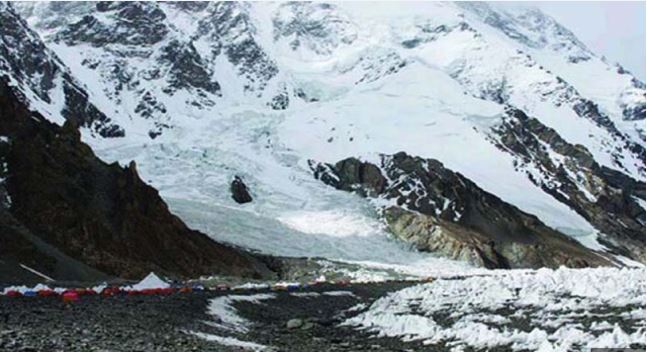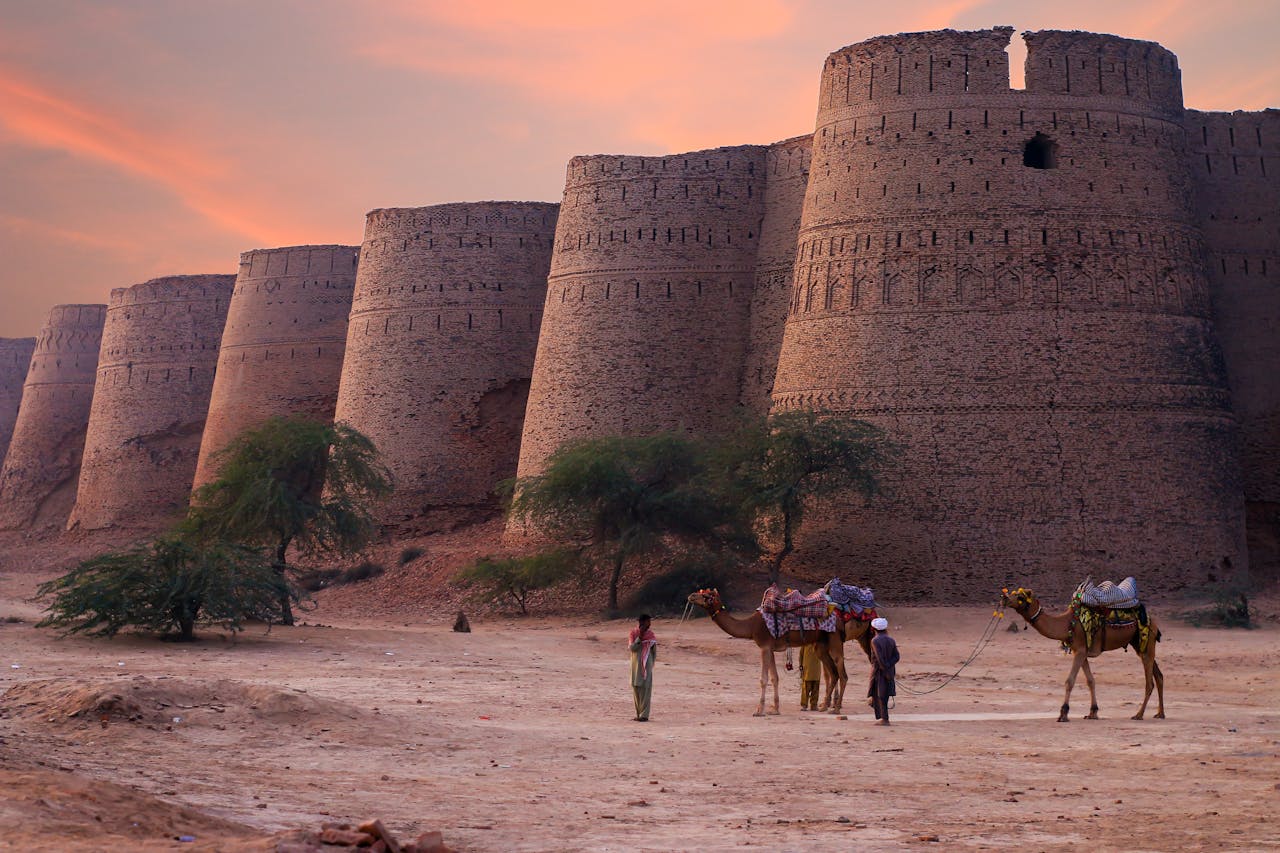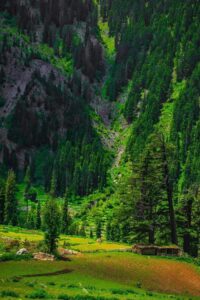Introduction
How does tourism increase climate change? It’s a question gaining urgency as more travelers explore the world and destinations like Pakistan welcome rising numbers of visitors. While tourism can boost local economies and foster cultural exchange, it also comes with a hidden cost: a growing environmental footprint that contributes directly to global warming. From carbon emissions generated by flights and road trips to the overuse of natural resources in fragile ecosystems, the tourism industry—if unmanaged—can accelerate climate change faster than many realize. In this article, we’ll break down the key ways tourism impacts the planet, explore its effects in the context of Pakistan, and share practical steps travelers and businesses can take to reduce harm while still enjoying the beauty of travel.
Understanding the Environmental Footprint of Tourism
Tourism, while often seen as a harmless and even beneficial activity, carries a significant environmental footprint. As more people travel each year for leisure, business, and adventure, the cumulative impact of tourism on our planet becomes more apparent. Understanding this footprint is the first step toward making responsible travel choices that protect the environment rather than degrade it.
What Is an Environmental Footprint?
An environmental footprint refers to the total impact that an activity, person, or industry has on the environment. In tourism, this includes the amount of natural resources consumed, the pollution generated, and the greenhouse gases emitted as a result of travel, accommodation, food consumption, and recreation.

1. Carbon Emissions from Transportation
Transportation is one of the largest contributors to tourism’s environmental impact. Whether it’s by air, road, or sea, travel requires energy—most of which still comes from fossil fuels.
- Air travel is particularly carbon-intensive. A single long-haul flight can generate more CO₂ per passenger than many people emit in a year.
- Road transport, including taxis, tour buses, and rental cars, adds to local pollution and global emissions.
- Cruise ships not only emit large quantities of carbon dioxide but also discharge waste into oceans, harming marine ecosystems.
These emissions trap heat in the atmosphere, contributing directly to global warming and climate change.
2. High Energy Use in Tourist Facilities
Hotels, resorts, and guest houses require large amounts of energy to maintain comfort and convenience for guests.
- Heating and cooling systems, hot water, lighting, and electronic devices all consume electricity—much of which is still generated by burning fossil fuels in many countries.
- Luxury amenities, such as heated pools, 24/7 air conditioning, and elevators, increase energy demand.
- In areas like remote valleys or mountain regions of Pakistan, where the energy supply is already limited, tourism can strain the local grid or encourage reliance on unsustainable fuel sources like diesel generators.
3. Resource Depletion
Tourism can lead to overconsumption of natural resources, especially in fragile environments.
- Water usage skyrockets in tourist-heavy areas. Hotels often use far more water per guest than the average local household, especially in places with gardens, pools, and laundry services.
- Food resources can also be stretched, particularly when tourist demand drives up prices or requires the import of non-local goods, increasing food miles and carbon emissions.
- In scenic locations, land and biodiversity are also at risk as forests are cleared to make way for roads, resorts, or recreational facilities.
4. Waste Generation and Pollution
Increased tourist activity usually brings increased waste—much of which is not managed properly, especially in developing or rural areas.

- Plastic waste from water bottles, food packaging, and toiletries is one of the most common and persistent pollutants.
- Sewage and greywater from hotels and resorts can contaminate local water bodies if not properly treated.
- Noise and light pollution, especially from entertainment facilities and transportation, disrupt wildlife and reduce the quality of life for local residents.
5. Habitat Disruption and Biodiversity Loss
Tourism infrastructure often requires altering natural landscapes, which can threaten ecosystems and biodiversity.
- Building hotels or roads through forests or mountains can lead to habitat loss for native species.
- Activities such as trekking, boating, or wildlife watching can disturb local animals and plant life, especially when done irresponsibly.
- Some regions in Pakistan, like the Deosai Plains and Khunjerab National Park, are home to rare and endangered species whose survival depends on undisturbed habitats.
6. Seasonal and Over-Tourism Effects
Another aspect of the environmental footprint is over-tourism, which happens when too many visitors flood a destination—often during the same peak season.
Community impact: Local residents may suffer from water shortages, rising prices, and reduced access to natural spaces.
Infrastructure strain: Roads, water systems, and waste disposal services get overwhelmed.
Soil erosion: Frequent foot traffic damages hiking trails and natural sites.
How Does Tourism Specifically Accelerate Climate Change?
While tourism brings cultural exchange and economic opportunities, it also plays a significant role in driving climate change. The connection lies in how tourism activities produce greenhouse gas emissions and disrupt natural processes that regulate the Earth’s climate. This section explores the specific ways tourism contributes to accelerating climate change.
1. High Greenhouse Gas Emissions from Transportation
Transportation is the backbone of tourism—and also its biggest contributor to climate change.
- Air travel, especially long-haul flights, is one of the most carbon-intensive forms of transportation. A single international flight can release hundreds of kilograms of CO₂ per passenger.
- Cruise ships not only burn massive amounts of heavy fuel oil but also contribute to ocean pollution.
- Road travel adds to local and global emissions through gasoline and diesel combustion. This is especially problematic in countries with old or inefficient public transport systems, where tourists often rent private vehicles.
These emissions directly contribute to the buildup of greenhouse gases in the atmosphere, which trap heat and lead to global warming.
2. Infrastructure Development in Natural Areas
Tourism often leads to the construction of new infrastructure—hotels, roads, airports, and resorts—which has lasting environmental consequences:
- Deforestation to clear land for resorts or roads reduces the number of trees available to absorb CO₂.
- Urbanization of rural or natural areas leads to the loss of carbon sinks—like forests, wetlands, and grasslands—that naturally help regulate climate.
- Soil sealing with concrete and asphalt alters local ecosystems and increases heat absorption, contributing to the “urban heat island” effect.
3. Energy Consumption in the Hospitality Industry
Hotels and resorts consume large amounts of energy to maintain comfort and convenience for guests.
- Air conditioning, heating, and lighting systems often run around the clock.
- In many regions, particularly developing countries, this energy comes from non-renewable sources like coal or gas, which emit CO₂ when burned.
- Luxury accommodations often have a larger carbon footprint, using more energy per guest than budget options.
This continuous demand for energy contributes to the emission of greenhouse gases and places stress on national power grids.
4. Overconsumption of Local Resources
Tourists often consume more water, electricity, and food than the local population, putting a strain on resources.
- Overuse of water can lead to droughts or water shortages, which are exacerbated by changing rainfall patterns due to climate change.
- Food demand for imported or out-of-season items increases the carbon footprint through transport and refrigeration.
- High levels of consumption result in increased waste production, much of which ends up in landfills or natural habitats, releasing methane—a potent greenhouse gas—as it decomposes.
5. Waste and Pollution Leading to Environmental Degradation
Tourism also generates pollution, which indirectly contributes to climate change and degrades the natural systems that help regulate it.
- Plastic pollution from single-use items clogs waterways, harming marine ecosystems and reducing the ocean’s ability to act as a carbon sink.
- Improper waste disposal—including untreated sewage—can contaminate water sources and damage soil, limiting the growth of vegetation that would otherwise absorb CO₂.
- Increased vehicle and industrial activity in tourist areas raises air pollution, contributing to both health risks and greenhouse gas emissions.
6. Damage to Carbon Sinks and Ecosystems
Natural ecosystems—like forests, wetlands, and oceans—act as carbon sinks, absorbing large amounts of carbon dioxide from the atmosphere. When tourism disrupts these environments:
- It reduces their ability to store carbon.
- It accelerates biodiversity loss, which affects the balance of local ecosystems.
- It creates long-term climate imbalances, particularly in fragile regions like mountains, glaciers, and coastlines.
In Pakistan, for instance, tourist pressure on areas like the Deosai Plains or Khunjerab Pass can disturb sensitive ecosystems that play a vital role in the regional climate.
7. Contribution to Glacial Melting and Sea-Level Rise
In mountainous countries like Pakistan, rising temperatures fueled by greenhouse gas emissions are accelerating glacial melting.
- The Hindu Kush-Himalayan region, home to thousands of glaciers, is warming faster than the global average. This is partly due to increased emissions from human activity, including tourism.
- Melting glaciers lead to rising sea levels, increased flooding, and disruption of freshwater supplies—problems already visible in many parts of South Asia.
The Cumulative Effect: A Cycle That Feeds Itself
Tourism doesn’t just contribute to climate change—it often creates a feedback loop:
- Increased travel leads to higher emissions.
- Rising emissions drive climate change.
- Climate change makes some destinations less desirable or even dangerous (e.g., rising temperatures, extreme weather).
- New destinations open, often in untouched natural areas—starting the cycle all over again.
Understanding this cycle is crucial for travelers, tourism operators, and policy-makers alike if we hope to reduce tourism’s role in accelerating climate change.
Tourism and Climate Change in Pakistan
Pakistan, with its diverse landscapes—from snow-covered mountains to coastal beaches and desert plains—is rapidly emerging as a favored destination for both local and international tourists. Regions like Hunza, Skardu, Swat, and Murree attract thousands each year seeking natural beauty, cultural experiences, and adventure.
While tourism can boost local economies and promote cultural exchange, it also brings environmental challenges. Climate change, already a critical issue in Pakistan, is being intensified by the rise in unregulated tourism. Understanding how tourism contributes to climate change in the local context is essential for promoting responsible travel and preserving Pakistan’s natural heritage.
1. Rising Emissions from Transportation and Overcrowding
As domestic and international tourism increases, so does transportation-related carbon emissions.
- Private vehicle use is common in northern areas, where tourists travel by car, jeep, or bus through mountainous terrain. Long travel distances and fuel-inefficient vehicles contribute significantly to carbon emissions.
- Lack of public transport alternatives in tourist hotspots forces many to rely on rented vehicles or tour operators with fleets of diesel-powered vans.
- Overcrowding in popular destinations like Murree often leads to traffic congestion and idling vehicles, which release pollutants into the air.
This rise in travel-related emissions directly contributes to global warming and poor air quality.
2. Environmental Degradation in Fragile Ecosystems
Pakistan’s northern regions—home to high-altitude meadows, glaciers, and rare wildlife—are especially vulnerable to environmental damage from unchecked tourism.
- Construction of roads, hotels, and resorts in previously untouched areas leads to deforestation and soil erosion.
- Off-road driving and unregulated trekking damage fragile alpine ecosystems.
- The Deosai National Park, a unique plateau ecosystem, faces habitat disruption due to increasing tourist activity, noise, and littering.
- Litter and plastic waste often go unmanaged, polluting rivers, lakes, and forests, and threatening biodiversity.
These disturbances weaken the natural systems that act as carbon sinks and climate stabilizers.
3. Pressure on Water and Energy Resources
Many tourist destinations in Pakistan already face resource scarcity—particularly in water and electricity.
- Hotels and guesthouses in mountain areas often rely on diesel generators due to limited power supply, which adds to greenhouse gas emissions.
- Tourist demand for hot water, laundry services, and imported food strains local energy and water supplies, increasing the overall environmental footprint.
- In popular places like Skardu or Naran, high water usage during peak seasons causes shortages for local residents.
This imbalance often leads to resentment among local communities and highlights the unsustainable nature of current tourism practices.
4. Glacial Melting and Tourism’s Role
Pakistan has more glaciers than almost any other country outside the polar regions, many of which are in Gilgit-Baltistan and Khyber Pakhtunkhwa.
- Scientists have noted that these glaciers are melting at an accelerated pace, partly due to rising temperatures and the black carbon (soot) deposited by vehicle emissions and fires.
- Tourist activity near glaciers, including campfires, motorbike expeditions, and increased foot traffic, contributes indirectly to the warming and melting process.
- As glaciers melt, they raise the risk of glacial lake outburst floods (GLOFs), threatening nearby communities and disrupting natural water cycles.
This is a clear example of how localized tourism can accelerate global climate phenomena.
5. Waste Management Issues in Tourist Hubs
Many tourist areas in Pakistan lack the infrastructure to handle the waste produced by seasonal visitors.
- Garbage bins are scarce, and there are few formal waste disposal systems in remote regions.
- Plastic pollution from bottles, snack packaging, and disposable utensils ends up in rivers, lakes, or along trekking routes.
- Burning waste in open areas is common, especially plastic, which releases toxic chemicals and greenhouse gases into the atmosphere.
Poor waste management not only harms the environment but also undermines the appeal of these natural destinations.
6. Economic Dependence and Seasonal Strain
The rise in tourism has brought income to many areas but also made them economically dependent on seasonal visitors.
- This creates pressure on locals to expand tourism infrastructure quickly, often without environmental assessments or sustainable planning.
- In high season, there’s a spike in demand for everything from food and fuel to electricity and water, leading to environmental degradation.
- In low season, businesses struggle, making it harder to invest in eco-friendly upgrades or long-term conservation efforts.
A more balanced, sustainable tourism model is needed to prevent environmental and economic instability.
Towards Eco-Friendly Tourism in Pakistan
Despite the challenges, there’s growing awareness about the need for sustainable tourism in Pakistan.
- Eco-lodges and green guesthouses are beginning to emerge, especially in regions like Hunza, Chitral, and Swat, offering environmentally friendly accommodation options.
- Government initiatives like promoting responsible tourism in the KP Tourism Policy 2020 aim to create sustainable development while protecting natural resources.
- Community-based tourism programs allow local residents to benefit economically while encouraging environmental stewardship.
For tourists and businesses alike, adopting practices that reduce the carbon footprint and protect natural areas is critical to ensuring that Pakistan’s landscapes remain intact for future generations.
Global Efforts to Address Tourism’s Environmental Impact
Pakistan, with its diverse landscapes—from snow-covered mountains to coastal beaches and desert plains—is rapidly emerging as a favored destination for both local and international tourists. Regions like Hunza, Skardu, Swat, and Murree attract thousands each year seeking natural beauty, cultural experiences, and adventure.
While tourism can boost local economies and promote cultural exchange, it also brings environmental challenges. Climate change, already a critical issue in Pakistan, is being intensified by the rise in unregulated tourism. Understanding how tourism contributes to climate change in the local context is essential for promoting responsible travel and preserving Pakistan’s natural heritage.
1. Rising Emissions from Transportation and Overcrowding
As domestic and international tourism increases, so does transportation-related carbon emissions.
- Private vehicle use is common in northern areas, where tourists travel by car, jeep, or bus through mountainous terrain. Long travel distances and fuel-inefficient vehicles contribute significantly to carbon emissions.
- Lack of public transport alternatives in tourist hotspots forces many to rely on rented vehicles or tour operators with fleets of diesel-powered vans.
- Overcrowding in popular destinations like Murree often leads to traffic congestion and idling vehicles, which release pollutants into the air.
This rise in travel-related emissions directly contributes to global warming and poor air quality.
2. Environmental Degradation in Fragile Ecosystems
Pakistan’s northern regions—home to high-altitude meadows, glaciers, and rare wildlife—are especially vulnerable to environmental damage from unchecked tourism.
- Construction of roads, hotels, and resorts in previously untouched areas leads to deforestation and soil erosion.
- Off-road driving and unregulated trekking damage fragile alpine ecosystems.
- The Deosai National Park, a unique plateau ecosystem, faces habitat disruption due to increasing tourist activity, noise, and littering.
- Litter and plastic waste often go unmanaged, polluting rivers, lakes, and forests, and threatening biodiversity.
These disturbances weaken the natural systems that act as carbon sinks and climate stabilizers.
3. Pressure on Water and Energy Resources
Many tourist destinations in Pakistan already face resource scarcity—particularly in water and electricity.
- Hotels and guesthouses in mountain areas often rely on diesel generators due to limited power supply, which adds to greenhouse gas emissions.
- Tourist demand for hot water, laundry services, and imported food strains local energy and water supplies, increasing the overall environmental footprint.
- In popular places like Skardu or Naran, high water usage during peak seasons causes shortages for local residents.
This imbalance often leads to resentment among local communities and highlights the unsustainable nature of current tourism practices.
4. Glacial Melting and Tourism’s Role
Pakistan has more glaciers than almost any other country outside the polar regions, many of which are in Gilgit-Baltistan and Khyber Pakhtunkhwa.

- Scientists have noted that these glaciers are melting at an accelerated pace, partly due to rising temperatures and the black carbon (soot) deposited by vehicle emissions and fires.
- Tourist activity near glaciers, including campfires, motorbike expeditions, and increased foot traffic, contributes indirectly to the warming and melting process.
- As glaciers melt, they raise the risk of glacial lake outburst floods (GLOFs), threatening nearby communities and disrupting natural water cycles.
This is a clear example of how localized tourism can accelerate global climate phenomena.
5. Waste Management Issues in Tourist Hubs
Many tourist areas in Pakistan lack the infrastructure to handle the waste produced by seasonal visitors.
- Garbage bins are scarce, and there are few formal waste disposal systems in remote regions.
- Plastic pollution from bottles, snack packaging, and disposable utensils ends up in rivers, lakes, or along trekking routes.
- Burning waste in open areas is common, especially plastic, which releases toxic chemicals and greenhouse gases into the atmosphere.
Poor waste management not only harms the environment but also undermines the appeal of these natural destinations.
6. Economic Dependence and Seasonal Strain
The rise in tourism has brought income to many areas but also made them economically dependent on seasonal visitors.
- This creates pressure on locals to expand tourism infrastructure quickly, often without environmental assessments or sustainable planning.
- In high season, there’s a spike in demand for everything from food and fuel to electricity and water, leading to environmental degradation.
- In low season, businesses struggle, making it harder to invest in eco-friendly upgrades or long-term conservation efforts.
A more balanced, sustainable tourism model is needed to prevent environmental and economic instability.
Towards Eco-Friendly Tourism in Pakistan
Despite the challenges, there’s growing awareness about the need for sustainable tourism in Pakistan.
- Eco-lodges and green guesthouses are beginning to emerge, especially in regions like Hunza, Chitral, and Swat, offering environmentally friendly accommodation options.
- Government initiatives like promoting responsible tourism in the KP Tourism Policy 2020 aim to create sustainable development while protecting natural resources.
- Community-based tourism programs allow local residents to benefit economically while encouraging environmental stewardship.
For tourists and businesses alike, adopting practices that reduce the carbon footprint and protect natural areas is critical to ensuring that Pakistan’s landscapes remain intact for future generations.
How to Travel Responsibly in Pakistan
Pakistan is a country of breathtaking natural beauty, rich culture, and warm hospitality. From the snow-capped peaks of the north to the serene beaches of the south, it offers countless opportunities for exploration and adventure. But as tourism grows, so does its impact on the environment, local communities, and cultural heritage.
Traveling responsibly in Pakistan means minimizing your environmental footprint, respecting local traditions, and contributing positively to the places you visit. Whether you’re a backpacker, luxury traveler, or promoting travel as an affiliate marketer, the choices you make matter.
Here’s how you can travel more responsibly across Pakistan:
1. Choose Eco-Friendly Accommodations
The first step in responsible travel is where you choose to stay.
- Look for eco-lodges, homestays, or guesthouses that prioritize sustainability.
- Support accommodations that use renewable energy sources, recycle waste, conserve water, and reduce single-use plastics.
- In regions like Hunza and Chitral, you can find family-run guesthouses that not only provide comfort but also support local livelihoods.
Tip: Avoid chain hotels that prioritize convenience over conservation unless they follow strong sustainability practices.
2. Reduce Your Carbon Footprint
Transportation is one of the biggest contributors to tourism-related emissions.
- Use public transport whenever possible—Pakistan has an extensive bus and train network that reaches many tourist destinations.
- For regional travel, carpool with other tourists or book shared group tours instead of renting a private vehicle.
- Walk, cycle, or use local rickshaws for short distances instead of taxis or motorbikes.
- If flying is necessary, consider carbon offset programs to balance your emissions.
3. Respect Local Culture and Communities
Pakistan is culturally diverse, and responsible travel means respecting its traditions, customs, and people.
- Dress modestly, especially in rural or religious areas. This shows respect and helps avoid unwanted attention.
- Ask before photographing people, especially women or in conservative communities.
- Learn a few basic words in Urdu or local languages—it goes a long way in building connections.
- Be mindful of religious practices and holidays; some sites may be closed or have different rules during these times.
Always interact with locals respectfully, and don’t treat cultural sites or traditions as exotic spectacles.
4. Minimize Plastic and Waste
Littering is a growing problem in many tourist areas in Pakistan, especially in the mountains and national parks.
- Carry a reusable water bottle and refill at filtered stations or use water purification tablets.
- Avoid buying plastic-packaged snacks and drinks.
- Bring your own reusable shopping bag and containers if you’re eating on the go.
- Dispose of trash responsibly. If you can’t find a bin, carry your waste with you until you do.
Remember: whatever you pack in, you should pack out.
5. Support Local Businesses and Products
Responsible tourism supports—not exploits—local communities.
- Buy handmade crafts and souvenirs directly from local artisans, rather than from large commercial vendors.
- Eat at locally owned restaurants and try regional dishes made with local ingredients.
- Book tours and treks through local guides and operators, who have better knowledge of the area and a vested interest in preserving it.
This not only boosts the local economy but also reduces the environmental cost of imported goods.
6. Choose Ethical Trekking and Wildlife Experiences
Pakistan is a top destination for nature and adventure travel. Whether you’re trekking in Fairy Meadows or exploring Khunjerab National Park, responsible behavior is key.
- Stick to designated trails to prevent soil erosion and protect plant life.
- Avoid picking flowers, disturbing animals, or feeding wildlife.
- Travel in small groups to minimize your impact and preserve the solitude of nature.
- Don’t ride animals (like donkeys or horses) that appear overworked or mistreated.
If you’re going on a wildlife tour, choose operators who follow ethical wildlife viewing guidelines.
7. Conserve Water and Energy
In many areas of Pakistan, especially in the mountains and deserts, water is scarce and energy is limited.
- Take short showers and avoid frequent towel or linen changes in hotels.
- Turn off lights, fans, and heaters when leaving your room.
- Avoid using high-power devices unnecessarily, especially if the area is powered by a generator or solar energy system.
These small steps can significantly reduce your environmental impact during your stay.
8. Avoid Overtourism Hotspots (or Travel Off-Season)
Overtourism puts a strain on infrastructure, nature, and communities.
- Avoid traveling during peak seasons (usually June to August in the north).
- Explore less-visited destinations like Neelum Valley, Kalash Valleys, Hingol National Park, or Thar Desert, which offer stunning experiences with fewer crowds.
- This not only gives you a more authentic and peaceful trip but also helps distribute tourism benefits more evenly.
9. Educate Yourself and Others
Responsible travel also means being aware of your actions and sharing that awareness with others.
- Learn about the environmental challenges facing the areas you visit, such as glacier melting or water scarcity.
- Support or donate to local conservation projects, such as reforestation efforts or wildlife protection programs.
- If you’re an affiliate marketer, blogger, or content creator, use your platform to highlight sustainable options and encourage ethical travel behavior.
10. Leave No Trace—Literally
This popular outdoor ethic is essential for preserving Pakistan’s natural beauty.
- Take only photos, leave only footprints.
- Don’t take rocks, plants, or other natural souvenirs.
- Leave campsites, picnic areas, and trails better than you found them.
Leaving no trace helps ensure these places remain beautiful and accessible for generations to come.
What Can Be Done Long-Term?
As tourism continues to grow in popularity and scale, its impact on the environment becomes harder to ignore. While short-term solutions like reducing waste and choosing eco-friendly hotels are important, long-term strategies are essential to address the root causes of climate change and ensure the sustainability of the tourism industry—especially in countries like Pakistan where natural beauty is a key attraction.
Sustainable tourism is not about stopping travel; it’s about changing how we travel, plan, and invest. From government action to individual responsibility, long-term change requires a collective and continuous effort. Here’s what can be done to create a more balanced and climate-conscious tourism future.
1. Government-Led Environmental Regulations
A strong policy framework is the foundation for lasting environmental impact.
- Implement strict environmental guidelines for the tourism industry, including rules on construction near protected areas, waste management, and carbon emissions.
- Enforce building codes that require energy efficiency, use of sustainable materials, and protection of local ecosystems.
- Introduce national green tourism standards and provide certifications for eco-friendly businesses.
- Invest in protected areas and national parks, including clear visitor limits, trained rangers, and infrastructure that supports conservation.
In Pakistan, greater coordination between tourism authorities, environmental departments, and local governments can help ensure that tourism supports—not threatens—environmental resilience.
2. Invest in Sustainable Infrastructure
Developing eco-friendly infrastructure is a long-term investment with lasting benefits.
- Replace or upgrade traditional lodging and facilities with energy-efficient, low-impact designs.
- Support public transportation systems in tourist hotspots to reduce private car use.
- Build waste treatment and recycling plants in high-traffic areas to manage tourist-generated waste properly.
- Encourage the use of solar energy, biogas, and water harvesting systems in tourism infrastructure, especially in remote areas.
Infrastructure built with the environment in mind not only minimizes damage but can also serve as an educational example for travelers and locals.
3. Promote Education and Awareness
Long-term change depends on people understanding the why behind sustainable travel.
- Launch public awareness campaigns targeting tourists and local communities about the environmental risks of unchecked tourism.
- Integrate climate education into school curriculums in tourism-heavy regions to build a generation of environmentally conscious citizens.
- Provide training for tourism operators and workers on sustainability, waste management, and conservation practices.
Tourism can also be used as a tool to educate travelers through interpretive trails, eco-tours, and conservation workshops that foster deeper respect for the destinations they visit.
4. Encourage Community-Based Tourism
Locals are the stewards of their environment. Empowering them leads to more sustainable tourism.
- Support community-run guesthouses, tour companies, and craft businesses, which tend to be more mindful of preserving local culture and nature.
- Ensure that local residents receive direct economic benefits from tourism, so they have an incentive to protect their environment.
- Train local guides on eco-friendly practices and equip them to educate tourists about the area’s environmental significance.
Community-based tourism not only preserves natural and cultural resources but also builds resilience and reduces dependency on mass tourism models.
5. Diversify Tourism Beyond Peak Seasons and Hotspots
Tourism that’s concentrated in a few destinations during limited times of the year causes environmental and economic strain.
- Promote off-season travel by offering discounts and experiences that highlight different aspects of a region.
- Develop and market lesser-known destinations to spread out the environmental load.
- Encourage longer stays and slow travel, where tourists spend more time in one area, reducing the frequency of transport and supporting local economies more meaningfully.
In Pakistan, this could mean promoting eco-tourism in the Cholistan Desert, Hingol National Park, or the Makran Coast alongside popular northern destinations.
6. Introduce Carbon Offsetting and Green Taxes
To reduce tourism’s climate impact over the long term, financial tools can incentivize more responsible choices.
- Carbon offset programs allow travelers and companies to invest in renewable energy or tree planting projects that balance out their emissions.
- Governments can consider eco-tourism levies or green taxes on flights, luxury accommodations, or high-emission activities to fund conservation efforts.
- Offer tax benefits or incentives to tourism businesses that invest in sustainable upgrades or achieve green certifications.
These financial measures create a direct link between tourism growth and environmental responsibility.
7. Partner with the Private Sector
Long-term solutions require collaboration between public agencies and private tourism businesses.
- Encourage partnerships with airlines, hotel chains, and tour operators to reduce emissions across the travel supply chain.
- Develop corporate sustainability pledges, where tourism-related businesses commit to transparency and regular reporting on their environmental impact.
- Support the development of green innovation, such as electric shuttle services, waste-to-energy solutions, and low-carbon adventure sports.
The private sector has the resources and reach to help scale sustainable tourism efforts—if properly guided and incentivized.
8. Foster Regional and Global Cooperation
Climate change and tourism are global issues that require collaboration across borders.
- Engage in regional tourism alliances that prioritize sustainable practices, especially in ecologically connected zones like the Himalayas or the Indus Basin.
- Participate in global environmental programs, such as the UN Sustainable Development Goals (SDGs) or the Global Sustainable Tourism Council (GSTC) standards.
- Learn from case studies in other countries that have successfully reduced the environmental impact of tourism while maintaining economic growth (e.g., Bhutan, Costa Rica, New Zealand).
Long-term sustainability means learning from global best practices and adapting them to Pakistan’s unique context.
9. Use Technology for Monitoring and Improvement
Digital tools and data can support better planning and long-term environmental health.
- Use geospatial technology and sensors to monitor foot traffic, emissions, and waste in key destinations.
- Create smart visitor management systems that regulate access during peak times or protect fragile ecosystems.
- Implement mobile apps or digital guides to educate tourists on eco-friendly practices and direct them to sustainable businesses.
Smart tourism backed by data ensures more efficient use of resources and quicker responses to environmental threats.
10. Build a Culture of Responsibility
Ultimately, long-term change comes from a cultural shift—where sustainability becomes a shared value.
- Encourage responsible storytelling in tourism marketing that emphasizes conservation over consumption.
- Recognize and reward eco-champions within communities who lead environmental efforts.
- Foster a mindset among travelers that every action has an impact, and that choosing sustainability doesn’t mean sacrificing comfort or enjoyment—it enhances the experience.
When sustainability becomes part of a traveler’s identity and a business’s reputation, the entire tourism system begins to evolve.
Final Thoughts: Striking a Balance Between Tourism and Climate Action
So, how does tourism increase climate change? The answer lies in high carbon emissions, intensive resource consumption, and damage to fragile ecosystems. Yet, this impact isn’t inevitable. Tourism can be reimagined to support—not sacrifice—the environment. When travelers, businesses, and content creators make informed, intentional choices, tourism becomes more than leisure—it becomes a tool for preservation and positive change. In countries like Pakistan, where tourism plays a growing economic role, the need for this balance is more urgent than ever. Whether you’re a visitor, an affiliate marketer, or someone sharing travel stories online, your influence matters. Promote eco-friendly travel options, support sustainable destinations, and encourage others to think beyond convenience. Because discovering the world should never mean damaging it. And when we act responsibly today, we help ensure the places we love remain vibrant, welcoming, and wild for generations to come.
FAQ
Question1. Can eco-friendly tourism reduce climate change?
Answer. Eco-friendly tourism helps but can’t fully offset mass tourism’s impact. A widespread shift to sustainable travel is essential to minimize long-term harm.
Question2. How does tourism damage ecosystems?
Answer. Tourism harms ecosystems through overcrowding, resource overuse, and pollution, speeding up climate change.
Question3. How can governments reduce tourism’s climate impact?
Answer. Governments can enforce environmental policies, promote sustainability, and invest in eco-friendly infrastructure to reduce tourism’s impact.




